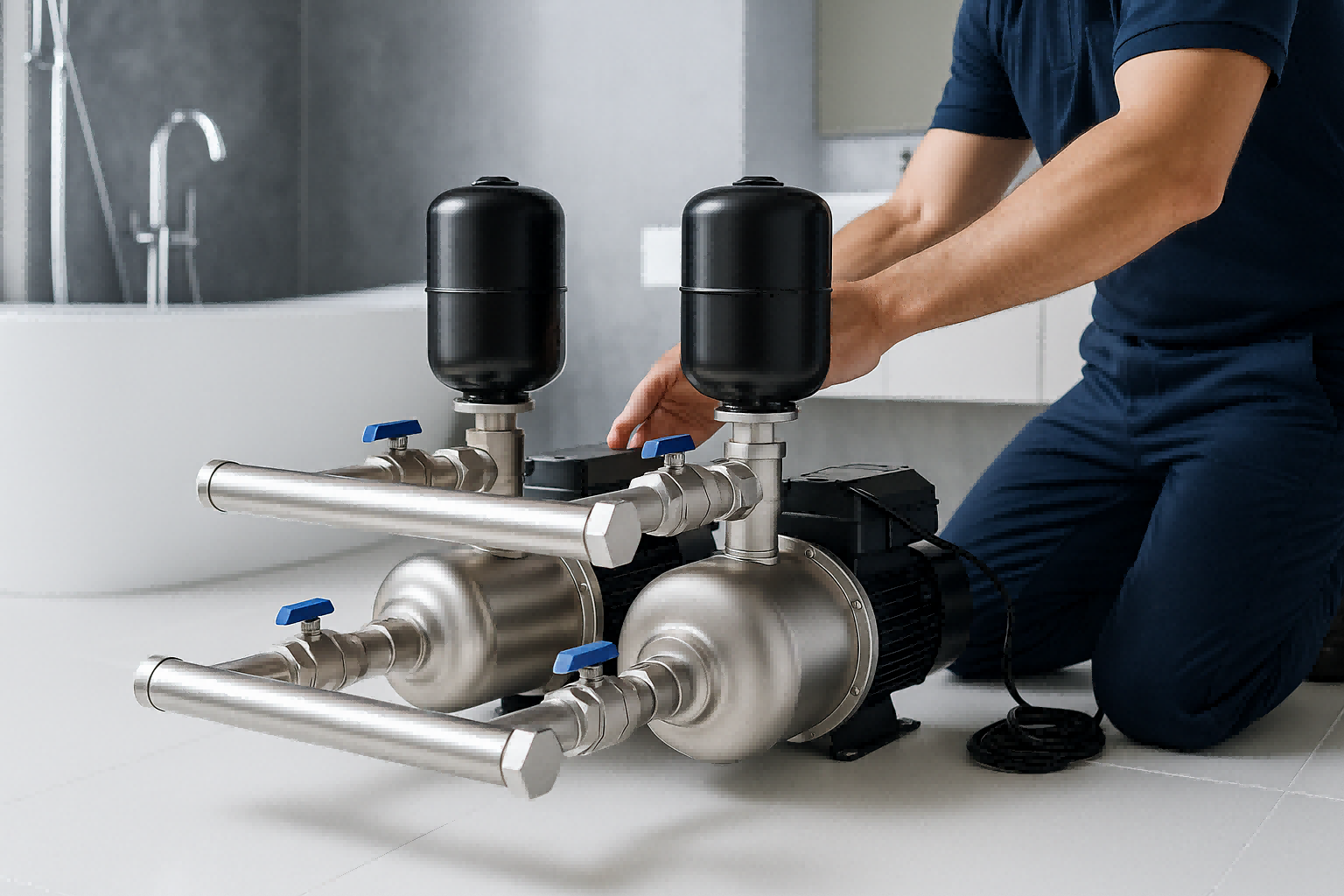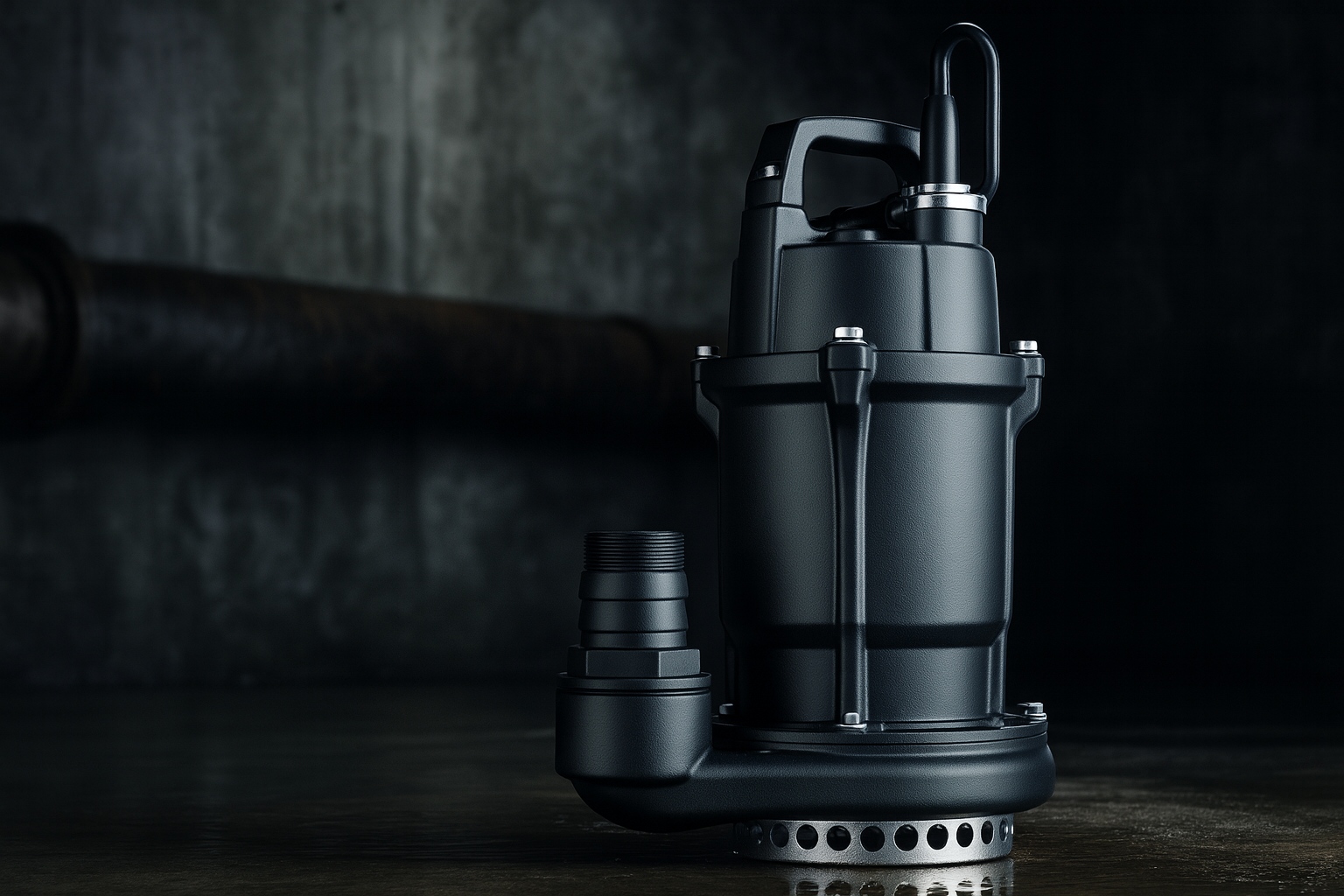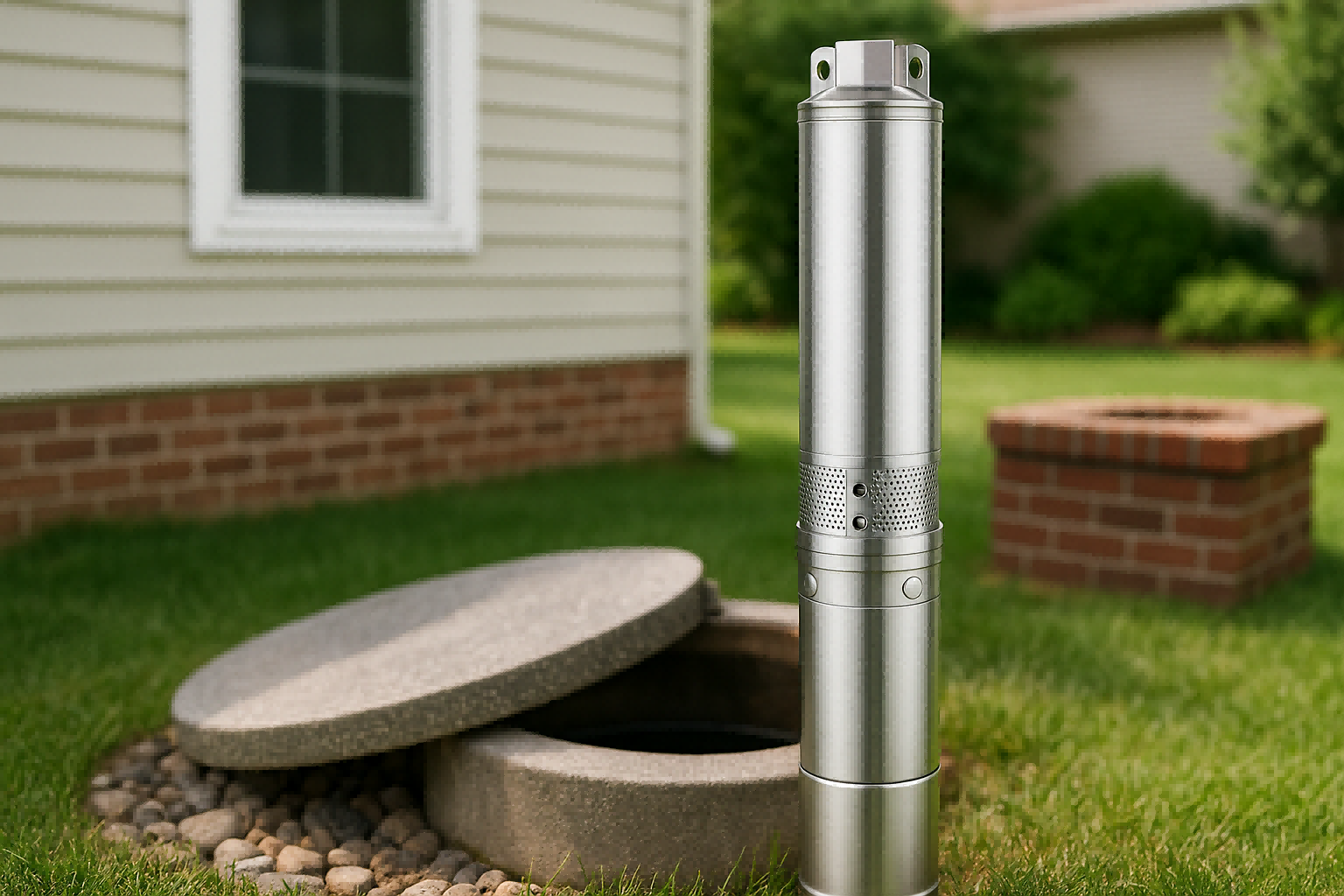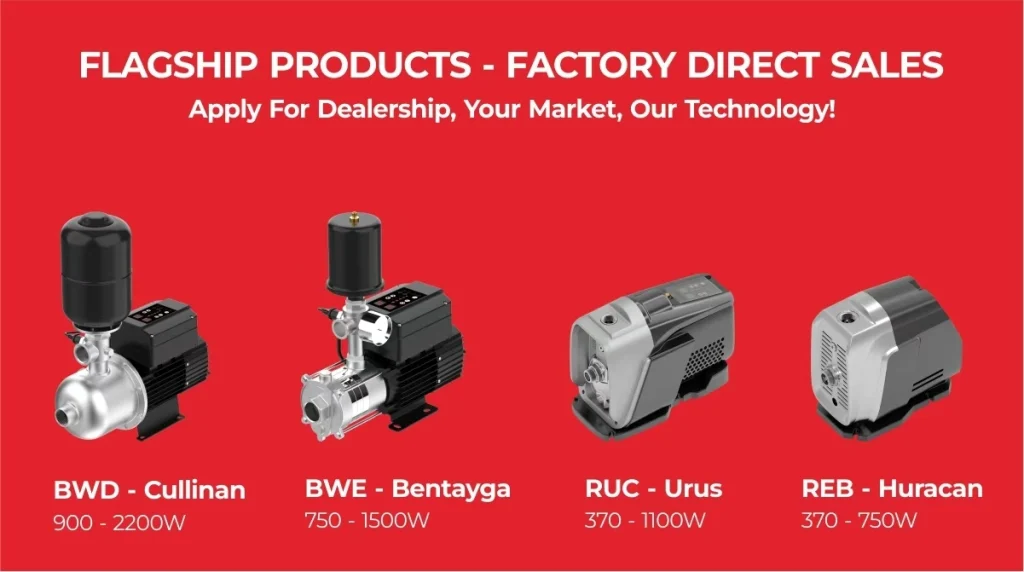Struggling with weak water flow?
Choosing the right size pressure pump is simple.
First, calculate your home's total water flow needs in Liters Per Minute (LPM).
Then, determine the required pressure based on house size and pipe length.
Combining these two factors will give you the perfect pump size.

Choosing a new water pump can feel overwhelming.
You see a lot of numbers for flow, pressure, and power.
Getting it wrong means either weak showers or a pump that wears out too fast.
This guide will walk you through the exact steps to select the perfect pump.
We will make this process simple and clear.
You will learn how to match a pump to your home's specific needs, ensuring great water pressure and long-term reliability.
How much water will be required?
Figuring out your water needs is the first step.
You don't want a pump that can't keep up with your family's daily routines.
To find the right flow rate, add up the water usage of all taps and outlets that might run at the same time.
A pump that matches this peak demand will prevent pressure drops.
This ensures a steady water supply, even when the shower, washing machine, and a tap are all running.
To select the right pump, you first need to understand your home's peak water demand.
This is simpler than it sounds.
It involves a quick audit of your water outlets.
Think about the busiest times of day, like mornings or evenings, when multiple people might be using water.
Your goal is to find the maximum possible flow rate your home might need at any single moment.
This figure, measured in Liters Per Minute (LPM), is the most important factor for sizing your pump correctly.
An undersized pump will struggle and cause frustrating pressure drops.
An oversized pump can be inefficient and cycle on and off too frequently, leading to premature wear.
Estimating Your Peak Flow Rate
Every water outlet in your home has a typical flow rate.
You can use these standard values to make a very accurate estimate.
Simply list the fixtures that could realistically be used simultaneously and add their flow rates together.
| Fixture | Average Flow Rate (LPM) |
|---|---|
| Toilet | 6 LPM |
| Standard Shower | 10 LPM |
| Tap (Kitchen/Bath) | 15 LPM |
| Washing Machine | 15-20 LPM |
| Dishwasher | 10 LPM |
| Garden Hose | 20 LPM |
Real-World Sizing Examples
Let's apply this to different household sizes to see how it works in practice.
-
Small Cottages: A small cottage or weekender might have a shower and a kitchen tap running together. That's 10 LPM (shower) + 15 LPM (tap), for a total of 25 LPM. A pump with a max flow rate around 25-30 LPM is a perfect fit.
-
Average Homes: A typical family home might see a toilet flush, a shower running, and a tap being used at the same time. This would be 6 LPM + 10 LPM + 15 LPM, totaling 31 LPM. A pump rated for 35-40 LPM provides a safe margin.
-
Larger Homes with Modern Appliances: For homes with multiple bathrooms and modern appliances, you should plan for up to four outlets running at once. For example, two showers (20 LPM), a toilet (6 LPM), and a washing machine (15 LPM) equals 41 LPM. Recommending a pump around 50-60 LPM would be wise.
-
Very Large Homes & Families: In large homes with several bathrooms and the potential for outdoor irrigation, you might have six or seven taps going. This could easily push demand to 70-90 LPM or more. In these cases, a high-capacity pump delivering upwards of 90 LPM is necessary to maintain performance.
By calculating your peak demand, you ensure the pump you choose can handle your household's busiest moments without any loss of comfort.
How much pressure is required?
Frustrated by weak showers?
The problem might be low water pressure, not flow.
Pressure, measured in kilopascals (kPa) or pounds per square inch (PSI), is the force pushing water through your pipes.
For most single-story homes, a working pressure of 300 kPa (about 42 PSI) is ideal for a strong, satisfying flow.
This ensures your appliances work correctly and your showers feel great.
Once you know the flow rate you need, the next critical piece of the puzzle is pressure.
Pressure is what makes your water feel powerful.
Without adequate pressure, even a high-flow pump will deliver a weak stream of water from your showerhead.
The key is to find the "working pressure," which is the pressure the pump can deliver at your required flow rate, not its maximum possible pressure.
A common mistake is choosing a pump based on its "max pressure" rating, which is often achieved at zero flow.
This number is misleading.
Always look for the pressure rating at a specific flow rate that matches your home's needs.
Pressure Basics for Residential Homes
For a typical single-story house, a working pressure of around 300 kPa (or 42 PSI) provides a comfortable and effective water supply.
This pressure is strong enough to run modern showerheads, washing machines, and dishwashers efficiently.
However, several factors can increase the amount of pressure you need.
You must account for these to avoid disappointment.
Factors That Increase Pressure Requirements
If your home has any of the following characteristics, you will need a pump that can deliver higher pressure.
-
Multi-Story Buildings: Gravity is your enemy here. For a two-story home, water needs to be pushed up to the second floor. You will need a higher pressure, often in the 400-500 kPa range, to maintain good pressure upstairs. Each story adds roughly 100 kPa to your requirement.
-
Long Pipe Runs: If your water tank or well is a long distance from the house, friction loss becomes a major issue. As water travels through pipes, it loses pressure due to friction against the pipe walls. The longer the pipe, the more pressure is lost.
-
Small Pipe Diameter: Using pipes that are too narrow for your required flow rate dramatically increases friction loss. It's like trying to push a lot of water through a small straw. This chokes the flow and requires much higher initial pressure to overcome.
-
Complex Plumbing: A high number of bends, elbows, and fittings in your plumbing system adds to the total friction loss. Each fitting creates turbulence that resists water flow, requiring more pump pressure to compensate.
A good rule of thumb is to calculate your base pressure need (e.g., 300 kPa) and then add at least 10% to account for friction loss.
If you have long pipe runs or a multi-story home, you will need to add significantly more.
Choosing a pump with adjustable pressure settings provides the flexibility to fine-tune the system for optimal performance.
What are the different types of household pumps?
Feeling confused by pump terminology?
You are not alone.
Words like "multistage," "jet," and "variable speed" describe how a pump works.
Choosing the right type is crucial for efficiency and reliability.
For most homes, modern multistage or variable speed pumps offer the best balance of strong, constant pressure and energy savings.
The pump market offers several distinct technologies, each designed for specific applications.
Understanding the core differences will help you select a pump that is not only powerful but also efficient and reliable for your unique situation.
The main choice often comes down to where your water source is and what level of performance you expect.
Some pumps are great at pulling water from a distance, while others excel at providing strong, silent pressure from a tank right next to the house.
Let’s break down the most common types.
Surface Pumps
These pumps are installed on dry land and pull water from a source. They are the most common choice for homes using rainwater tanks or shallow wells.
-
Multistage Pumps: These are the top choice for most modern homes. They use multiple impellers (like a series of fans) to build pressure incrementally. This design makes them highly efficient at delivering excellent pressure and flow. They are ideal for medium to large homes with long pipe runs or multiple stories. They are also known for being relatively quiet.
-
Jet Pumps: Jet pumps are workhorses designed for difficult suction applications. They are "self-priming," which means they can handle air in the suction line much better than other types. This makes them perfect for drawing water from sources below the pump, like a dam, creek, or a well where the water level can fluctuate. While very reliable, they are generally less energy-efficient than multistage pumps.
Specialized Pump Technologies
Beyond the basic types, modern technology offers advanced solutions for superior performance and energy efficiency.
-
Variable Speed (VFD) Pumps: This is the most advanced and efficient technology available. A Variable Frequency Drive (VFD) controller constantly monitors water demand and adjusts the motor's speed in real-time. When you only turn on a small tap, the pump runs slowly, saving a significant amount of electricity. When demand increases, it speeds up to maintain a perfectly constant pressure. This technology eliminates pressure fluctuations, operates almost silently, and dramatically extends the pump's lifespan by reducing mechanical stress.
-
Submersible Pumps: As the name suggests, these pumps are installed directly inside your water source. They are most commonly used in deep wells (bores) or can be placed inside a rainwater tank. Submersible pumps push water up rather than pulling it, which is a much more efficient way to lift water from deep sources. Most submersible models for household use are multistage in design to provide the high pressure needed to get water to the surface and then around the house. They are also virtually silent since they operate underwater.
Understanding these types helps you match the pump's strengths to your home's needs, leading to a more effective and durable water system.
Which pump controller is best?
Is your pump constantly turning on and off?
This is called short cycling, and it wastes energy while wearing out your pump motor.
The right controller prevents this.
For the best performance, a modern automatic constant pressure controller is the superior choice.
It provides steady pressure and intelligent pump protection.
The controller is the brain of your water pump system.
It tells the pump when to turn on and when to turn off.
The type of controller you choose has a massive impact on your system's performance, energy consumption, and the pump's overall lifespan.
There are two main types of controllers used in residential applications, each with its own set of advantages and disadvantages.
Making the right choice here is just as important as selecting the right pump.
Let's explore how each one works.
Automatic Constant Pressure Controllers
This is by far the most popular and modern solution.
Sometimes integrated into a Variable Frequency Drive (VFD) system, these electronic controllers offer intelligent and seamless operation.
-
How They Work: A constant pressure controller uses a flow sensor and a pressure sensor. When you open a tap, the controller detects the drop in pressure and instantly starts the pump. It keeps the pump running as long as water is being used, providing a smooth, continuous, and stable pressure. When you close the tap, it senses the flow has stopped and turns the pump off.
-
Key Advantages:
- Stable Pressure: They eliminate the annoying pressure fluctuations common with older systems. Your shower pressure stays consistent.
- Run-Dry Protection: This is a critical safety feature. If your water tank runs empty, the controller will automatically shut the pump off to prevent it from burning out. Many intelligent controllers will then periodically try to restart to see if water has returned.
- Compact Design: These systems are typically more compact as they don't require a large pressure tank.
Pressure Switch and Tank Combination
This is the traditional method for automating a pump.
It's a reliable mechanical system but lacks the sophistication of modern electronic controllers.
-
How They Work: This system uses a mechanical pressure switch and a pressure tank. The tank contains a bladder with a pocket of pressurized air. The pump fills the tank with water, compressing the air until the pressure reaches a pre-set "cut-out" point (e.g., 60 PSI), and the switch turns the pump off. When you use water, it's drawn from this tank. The pressure gradually drops until it hits the "cut-in" point (e.g., 40 PSI), and the switch turns the pump back on to refill the tank.
-
Key Disadvantages:
- Pressure Fluctuations: You will notice the pressure changing as it cycles between the high and low settings.
- Less Responsive: The pump only starts after a certain amount of water has been used from the tank, which can feel less immediate.
- More Frequent Cycling: While the tank reduces cycling for very small uses (like washing hands), it can lead to more start/stop cycles during prolonged use like a shower, causing more wear on the motor over time compared to a VFD system.
For a superior user experience, enhanced pump protection, and better energy efficiency, a system with an automatic constant pressure controller, especially a VFD-based one, is the clear winner for modern homes.
What Size Pressure Tank Do I Need?
Is a pressure tank always necessary?
Not with modern pumps.
A pressure tank stores a small reserve of pressurized water to reduce pump cycling.
With a variable speed pump, the motor adjusts speed to match demand, making a large tank unnecessary.
A small tank is still useful to absorb pressure spikes and prevent water hammer.
The role of a pressure tank can be confusing, especially with new pump technologies on the market.
Traditionally, pressure tanks were essential for any automatic water system.
They act as a buffer, storing a small amount of pressurized water.
This allows you to draw a little water, like when washing your hands, without the pump needing to start immediately.
The main goals of a pressure tank are to reduce pump "short cycling" and to smooth out pressure delivery.
However, the need for a large pressure tank has changed dramatically with the advent of variable speed pumps.
Understanding Drawdown and Tank Sizing
The most important concept with pressure tanks is "drawdown."
This is the actual amount of usable water you can get from the tank before the pump has to turn on again.
It's important to realize that a 20-gallon tank does not give you 20 gallons of water.
Due to the compressed air needed to create pressure, the actual drawdown is typically only about 30-50% of the tank's total volume.
- Example: A common 20-gallon (approx. 75-liter) pressure tank with a 40/60 PSI pressure switch setting will only provide about 6-7 gallons (23-26 liters) of usable water.
For traditional, fixed-speed pumps, the general rule is to size the tank to provide at least one minute of the pump’s run time.
For a pump that delivers 10 GPM (gallons per minute), you would need a tank with a drawdown capacity of 10 gallons.
This would require a pressure tank with a total volume of around 30-40 gallons.
Why Variable Speed Pumps Change the Equation
Variable Speed Drive (VFD) pumps make this entire calculation almost obsolete.
Because a VFD pump can run at very low speeds to match low flow demands, it doesn't need to turn off.
It simply slows down.
This eliminates the problem of short cycling.
As a result, VFD systems do not require large, bulky pressure tanks to protect the motor.
However, it is still highly recommended to install a small pressure tank (e.g., 1.5 - 5 Liters) with a VFD pump for two key reasons:
- Dampening Water Hammer: The small tank acts as a shock absorber. When a tap is closed suddenly, it absorbs the pressure spike (water hammer) that would otherwise stress your pipes and fittings.
- System Stability: It smooths out tiny fluctuations in pressure and helps the controller's sensors take more stable readings, leading to even more precise pressure control.
For fixed-speed pumps, a larger tank is crucial for motor longevity.
For a modern VFD pump, a small tank is a smart addition for system protection and stability, but you no longer need to dedicate a large space to a bulky tank.
Conclusion
Choosing the right pump means balancing flow and pressure.
Calculate your peak water use and factor in your home's size.
A modern variable speed pump will provide the best performance, efficiency, and reliability.
FAQs
What PSI should my house water pressure be?
An ideal residential water pressure is between 40-60 PSI. For most single-story homes, a working pressure of 300 kPa (about 42 PSI) is perfect for comfortable use.
How many GPM does a house of 4 need?
A house of 4 could have a peak demand of 10-15 GPM (38-57 LPM). A pump should be sized to meet this peak usage, not average daily use.
How do I increase water pressure in my house?
The most effective way is to install a pressure booster pump. These pumps increase the pressure of the water entering your home to an optimal, constant level.
What is the difference between a water pump and a booster pump?
A water pump moves water from a source (like a tank or well), while a booster pump increases the pressure of water already in the plumbing system. Many modern pumps do both.
How long should a water pressure pump last?
A quality water pump should last 8-15 years. Lifespan depends on quality, usage, and whether it's protected from issues like short cycling and running dry.
Is a 1/2 HP water pump enough for a house?
A 1/2 HP pump can be sufficient for a small, single-story home with low water demand. However, flow and pressure ratings are more important than horsepower alone.
Do I need a pressure tank with a variable speed pump?
A large pressure tank is not needed. However, a small 2-8 liter tank is highly recommended to absorb pressure shocks (water hammer) and improve system stability.
Can a pressure tank be too big?
Yes. An oversized tank can lead to stale, stagnant water if the water isn't cycled through regularly. s output.








